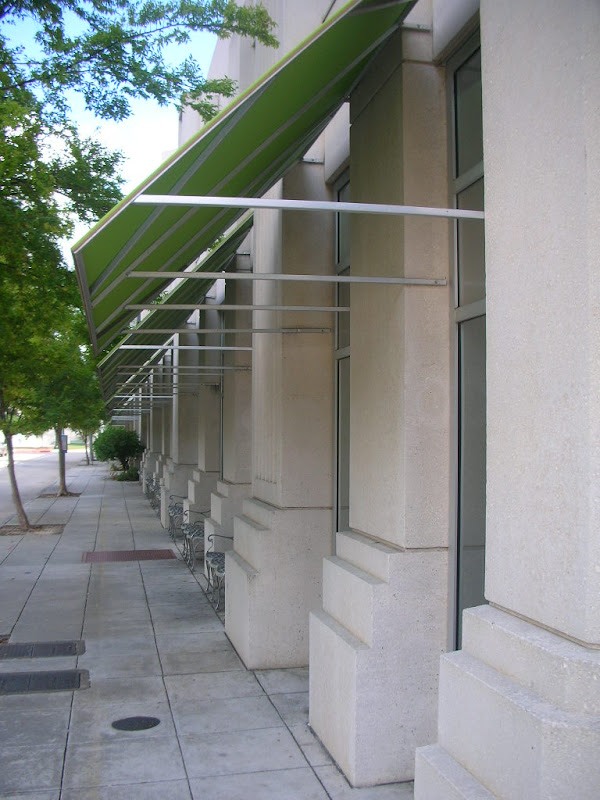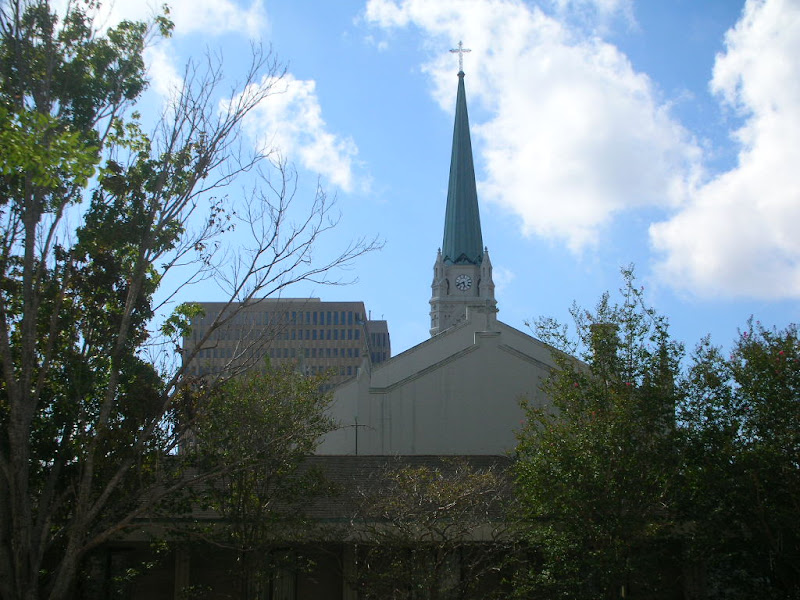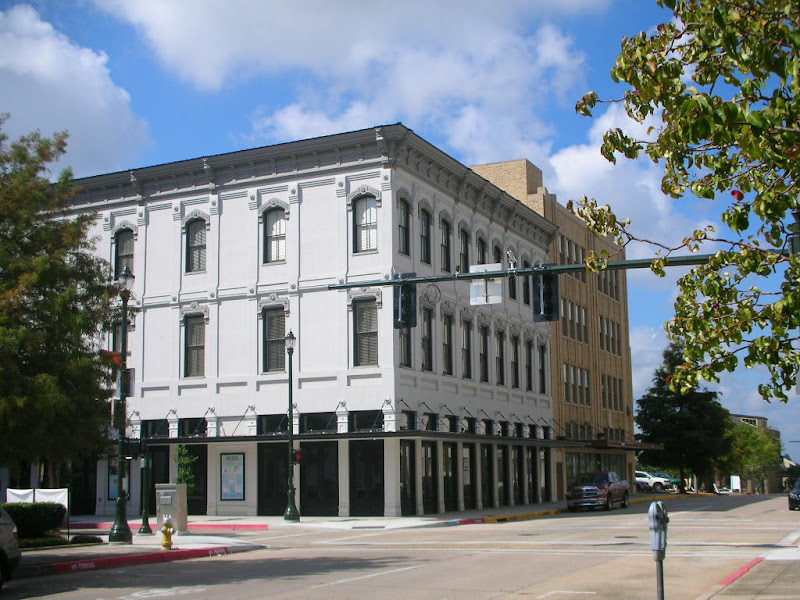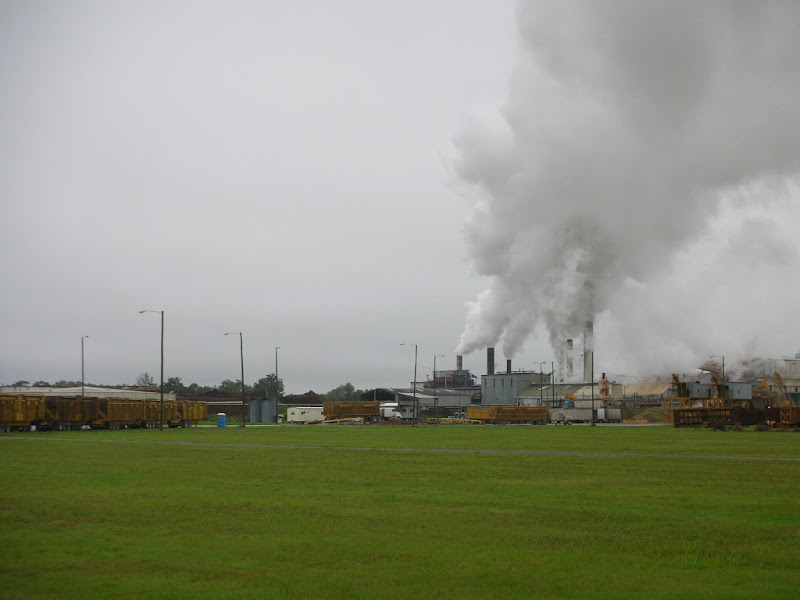Thursday, December 17, 2009
Happy, Happy, Joy, Joy
When scientists and researchers line up all the states for rankings, Louisiana typically ranks near the top or bottom - and it's usually not in a good way. However, here's something to be "happy" about: Louisiana residents are the happiest in the nation. It's probably the food.
Thursday, December 10, 2009
Down the River Road to Paulina
Today I had an appointment in Paulina, located in St. James Parish. I thought this was a good day to dip back into updating this blog because the drive to Paulina allowed me to take "the scenic route" down River Road - home of massive industry and old plantation homes. This post will deal primarily with plantation homes.
There were several faster routes I could have taken this morning than River Road, because it closely hugs the Mississippi as it twists and turns. So although the meeting might have only been about 20 miles from my house as the crow flies, I probably drove something like 40 miles.
I joined River Road in Burnside, home of Houmas House plantation. Unfortunately I forgot that Houmas House was the other direction, so I didn't get any pictures of it. The first place I stopped to take pictures was the site of Tezcuco Plantation. As you'll notice from the photos, the home is no longer there because it burned down in 2002. More information on the demise of Tezcuco can be found here. All that's left now are the grounds and what appear to be chimneys or some other type of support structure. Overall, it's kind of depressing.


This is an old abandoned gas station or general store that caught my eye.

The next stop was Poche Plantation, built in 1867 by Judge Felix Pierre Poche on a 160-acre sugarcane plantation.




Next stop was the magnificent Manresa. Manresa is run by the Jesuits as a retreat facility. As I've learned, many (if not all) the retreats are silent, where the participants do not speak a word all day, even at the group dinner. Maybe I'm crazy, but it felt very quiet and peaceful when I stopped to take these pictures. No cars or trucks were rumbling by, which helped. It's unclear to me whether the buildings on the Manresa grounds were purpose-built by the Jesuits or represent a re-purposing of an older plantation. But either way, the grounds are beautiful.










Shortly after pulling away from Manresa, my newly-acquired GPS was showing that I was starting to cut it pretty close on the timing of my meeting. So after about 30 minutes of disregarding the disembodied female voice's pleas to "turn left" and "turn around," I finally started listening to her. I made a turn left off of River Road and went through a modest residential area. After about a half mile, though, I found myself facing this:

In case that's not clear, it's a dirt road through a sugarcane field. I'm not even sure if it was a public road, but I decided to give it a try. After a couple minutes I came upon an egret...

...who promptly flew away as I drove past...

I also passed this "flower truck..."

...and mercifully the road did let out onto the highway I was trying to reach.

From there it was just a short trip to my appointment...
Sunday, October 25, 2009
The Pie Capitol of Louisiana
The whole drive down Highway 71 made me wish I had my camera with me - we went through some interesting little towns. Lecompte calls itself the "Pie Capitol of Louisiana," and apparently hosts an annual pie festival. We stopped at Lea's Lunchroom, which is a charming little place, and there were only a few patrons at 3:00 on a Saturday afternoon. I can't say the meringue-topped pies were the best I've ever had, but it was a nice way to relax after a four hour client meeting. Thankfully Lea's has a website, so you can find a few pictures there. Here's one I snapped after I got home...

Sunday, October 11, 2009
Sugarcane
Sunday, September 27, 2009
Baton Rouge
I had several appointments in downtown Baton Rouge this past week, but unfortunately, each time I wanted to take some pictures, I was foiled by weather or other appointments. So today I spent some time walking around the downtown area to catch you up on where I've been.
It is said that the Baton Rouge area has been inhabited since 8000 BC, but modern Baton Rouge can be traced back to 1699 when it was discovered by French explorer Sieur d'Iberville. Along the Mississippi River, d'Iberville saw a cypress pole, from which were hanging bloody animals and fish. This “red stick” gave Baton Rouge it's name. Today Baton Rouge has about a quarter of a million residents, with nearly 800,000 residing in the metro area. In addition to being the capitol of Louisiana and home to the largest college in the state, Louisiana State University, Baton Rouge is home to a large contingent of petrochemical companies, and is the ninth-largest port in the U.S. Based on weight.
As a Chicago native, I have a hard time using words like “skyline” or “tall buildings” to describe downtown Baton Rouge, but the city does have several 20+ story buildings in the central business district. As the state capitol, downtown Baton Rouge also has a number of municipal, state and federal buildings. Many of the are captured in the photos below. There has been an effort over the last several years to revitalize downtown Baton Rouge. In particular, some of the activity around Lafayette Street and Third Street is promising.
On Lafayette Street, you have the Shaw Center, a very distinctive piece of architecture housing the LSU Art Museum and a performance space, and the Hilton Capitol Center, a beautiful, historic hotel that was completely renovated/restored a few years ago. Third Street has a few neat little restaurants/bars. I have heard discussion of closing Third Street to vehicular traffic and attempting to make it more like Bourbon Street in New Orleans or Beale Street in Memphis. I think that is a long way off, for better or worse.
There are plenty of interesting areas just outside of downtown, but today's tour focuses just on the central business district. 100+ pictures ahead, so grab some refreshments. I hope you enjoy.



































































































